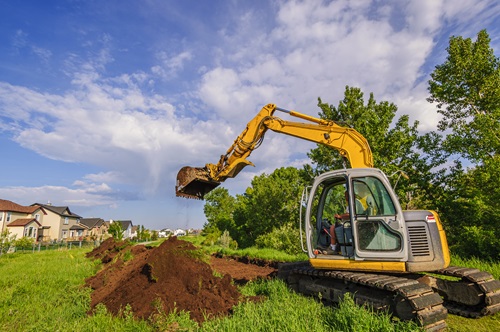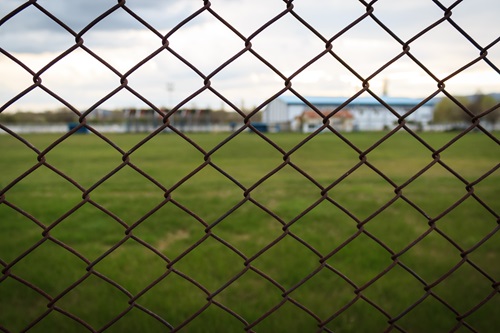
Sports tourism has often been referred to as a white knight who rides in and saves the day for communities whose officials want to heighten area visibility as well as public standing, not to mention economic impact.
But many cities have a message: We don’t need no stinkin’ knight. In fact, those communities are pushing back against those who believe sports tourism is silver bullet or a one-size-fits-all solution. And often, they are right: It could make things worse rather than better.
Most recently, The Washington Post covered the issue of Surf Cup Sports, a sprawling 120-acre soccer complex in Del Mar, California. The organization says it brings $120 million in economic impact to the region each year; however, according to those who live adjacent to it, the complex is not a good neighbor, causing problems for an environmentally sensitive wetlands that is home to a network of wildlife habitats, including several endangered species.
Many residents have accused Surf Cup Sports of tainting the natural lands around its fields and wreaking havoc on their lives through constant noise, traffic and pollution, notes the Post article. The fight has spilled over into the courtroom as well, with one group of homeowners suing the city for allowing Surf Cup to hold activities that far exceed what the site’s grant deed permits, while a resident is suing an affiliate of Surf Cup for allegedly deceiving him into selling his property adjacent to the field.
 It’s a story that has been playing out for several years now, not just in Del Mar but in cities nationwide. In Castro Valley, California, neighbors rose up to fight a proposal by the Castro Valley Unified School District. The district had planned to build a new athletic facility, and neighbors said it would negatively impact their daily lives.
It’s a story that has been playing out for several years now, not just in Del Mar but in cities nationwide. In Castro Valley, California, neighbors rose up to fight a proposal by the Castro Valley Unified School District. The district had planned to build a new athletic facility, and neighbors said it would negatively impact their daily lives.
Local resident Jeff Small told reporters the $14 million project would include the construction of four fields with a scoreboard, bleachers, field lights, a batting cage and blacktop.
“The issue is the scope of the project,” Small said. “It includes 15 stadium lights that will be on until 10 p.m. and the noise generated from it.”
The school district presented a statement from the sports lighting company, which said the lights would not be a bother; however, the community hired its own experts in sound and lighting, which stated that the complex would be bothersome. Unfortunately, residents added, they did not believe their feedback was really being considered.
It’s this idea – the we know better than you do philosophy of officials – that irks many community members in the same situation. In Milton, Georgia, owners of horse farms were furious when they learned about plans to build a 40-acre sports park that would butt up against farmland. Residents quickly put out signs, stating, “If you think traffic is bad now…”
Parking and traffic are key factors in the success of any sports facility; however, in the rush to build and promote, they are the things that are often left out. Many parks, for example, are rushing to put in pickleball courts, but in their haste, planners forget to make arrangements for parking, restrooms, access roads or other infrastructure. That, in turn, leads to congestion, to complaints from residents – and even to some truly unfortunate incidents, like the one in British Columbia, where a takeover of a parking lot for pickleball courts resulted in a lack of access for individuals with disabilities.
In some cases, sports complexes are built with sports tourism in mind, but without a thought as to whether hotels are available to house participants in travel tournaments; in fact, the availability of nearby lodging (and restaurants, for that matter) will be essential considerations for event owners in the site selection phase. Wi-Fi availability will also be key. In short, the "If you build it..." philosophy won't work unless all the pieces are in place. And in the electronic age, complaints will quickly become known.
Sports parks often are billed as the best turnaround mechanism for troubled areas; increasing foot and car traffic, proponents say, creates an environment less conducive to crime.
But not always. In 2016, neighbors near the Goldin Sportsplex (a park in Mississippi with football fields, baseball fields, basketball courts and tennis courts) told reporters that large fights among not just teens but adults were becoming commonplace, and that they were worried for their safety, and that of their children.
In 2017, one man was arrested and two others were being sought in connection with a shooting in the facility. Neighbors began calling for the sportsplex to be closed and locked when not in use. And while violence at sports facilities is far from typical, it is essential to note that sports tourism is never a guaranteed solution to any problem.
Coach & Athletic Director Magazine noted that often, even making upgrades to college and high school athletic facilities can cause friction with neighbors. And at the crux of this is usually the fact that with those improvements comes the ability for schools to host camps, clinics and tournaments when class is not in session, making neighbors feel as though their quality of life is secondary to the school’s ability to make money off its facilities.
“I think the biggest issue is the neighbors felt like we were going to push this through without any support, that we weren’t going to be a good neighbor,” Shelley Smith, Mountain View High School athletic director and football coach, told Coach & AD about a project the school had been considering. “You’re not going to please everybody, and that’s where we’re at right now — the point of what’s reasonable, what’s not. We’re trying to put a reasonable policy together.”
The term, NIMBY (short for Not In My Backyard), is often thrown around when neighbors protest a development. However, in some cases, the outcry is loud enough to cause officials to look elsewhere for sites on which to build. This was the case in 2018 in Middletown, New Jersey, when a public park was set to be bulldozed in order to host a planned sports complex with nine athletic fields, lights, a sound system and games throughout the week.
 Neighbors rose up en masse to protest, citing not only the loss of their treasured green space but the fact that the only entrance and exit to the area was via a one-lane bridge, something sure to cause problems for those trying to use those nine fields. That outcry finally moved the needle in the proceedings, causing officials to begin exploring other areas for development. In Seattle, plans for new pickleball courts were scrapped in late May of this year after pushback from neighbors; officials noted they had found other land on which to build.
Neighbors rose up en masse to protest, citing not only the loss of their treasured green space but the fact that the only entrance and exit to the area was via a one-lane bridge, something sure to cause problems for those trying to use those nine fields. That outcry finally moved the needle in the proceedings, causing officials to begin exploring other areas for development. In Seattle, plans for new pickleball courts were scrapped in late May of this year after pushback from neighbors; officials noted they had found other land on which to build.
To be clear, sports tourism can be a great boon for cities – but it has to be a case where both officials and residents are fully on board with the concept. Not considering infrastructure in the planning stages, cutting residents out of the picture and refusing to consider their input or prioritizing only the economic impact of a facility will result in problems. Residents, after all, are keenly aware of what the traffic and parking are like, where congestion and accidents are likely to be – and how new construction will affect them; they can be valuable allies – or formidable foes.
But the juggernaut of sports tourism is hard to fight. Back in California, neighbors continue to struggle in their against Surf Cup Sports and its negative impact on local wildlife.
“This battle is representative of the fact that youth sports are significant. It has become a very, very big … business is the wrong word. … It’s a very big project and a piece of American society today,” said Brian Enge, Surf Cup’s chief operating officer. “You’re going to see that battle continue to increase. You’re finding youth sports bring a lot of value to communities, both for family activity and economically. But does it encroach oftentimes on use of open or public land? Yeah, and this is represented in that.”

